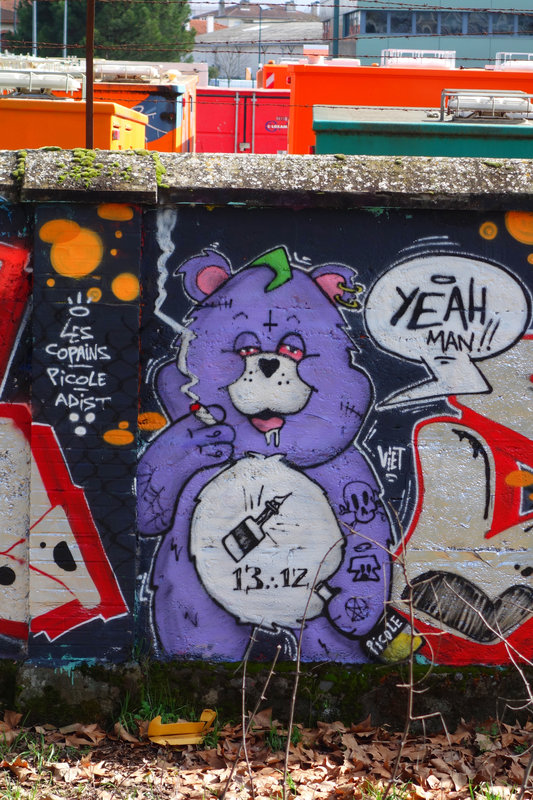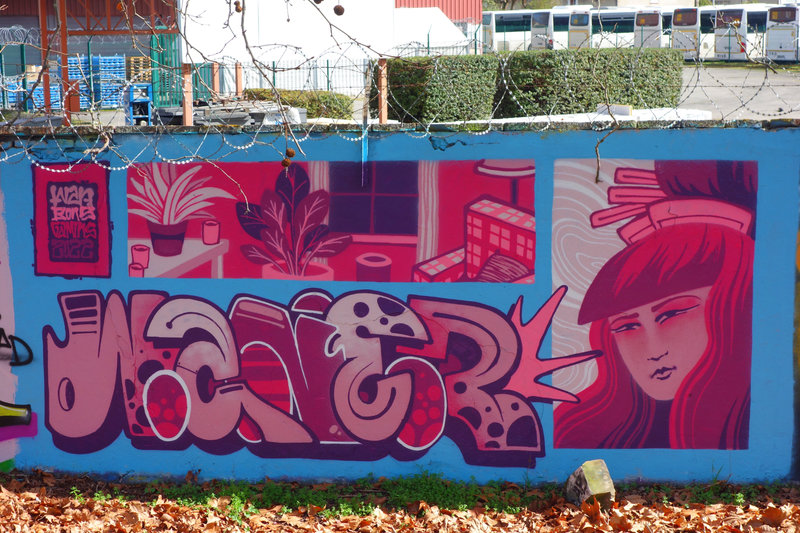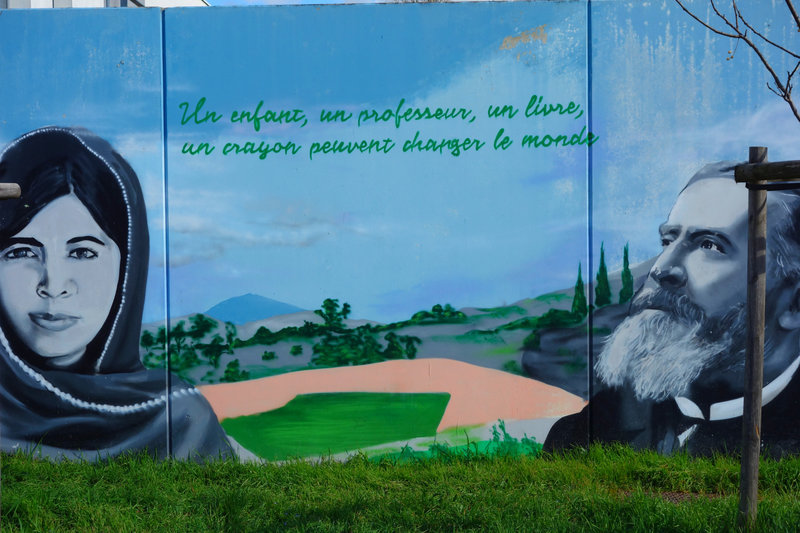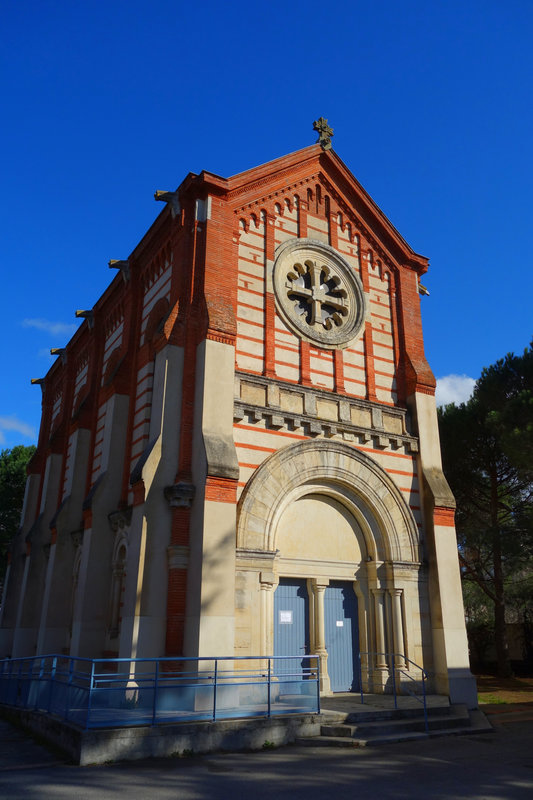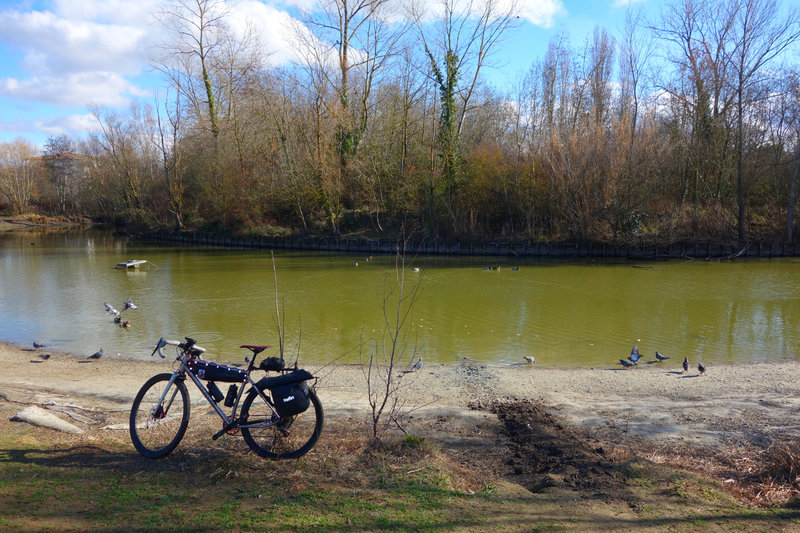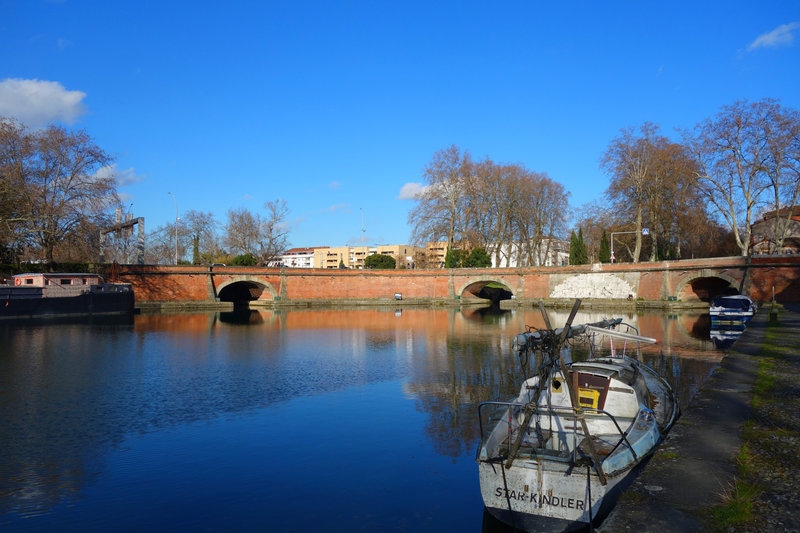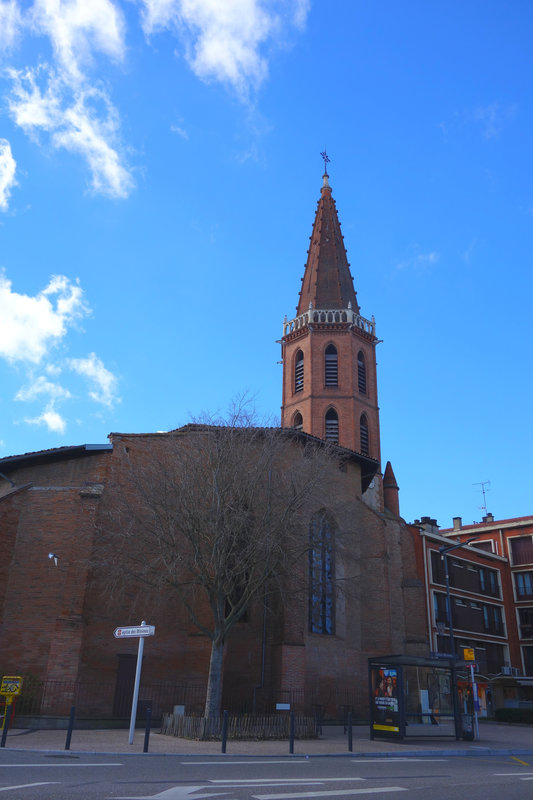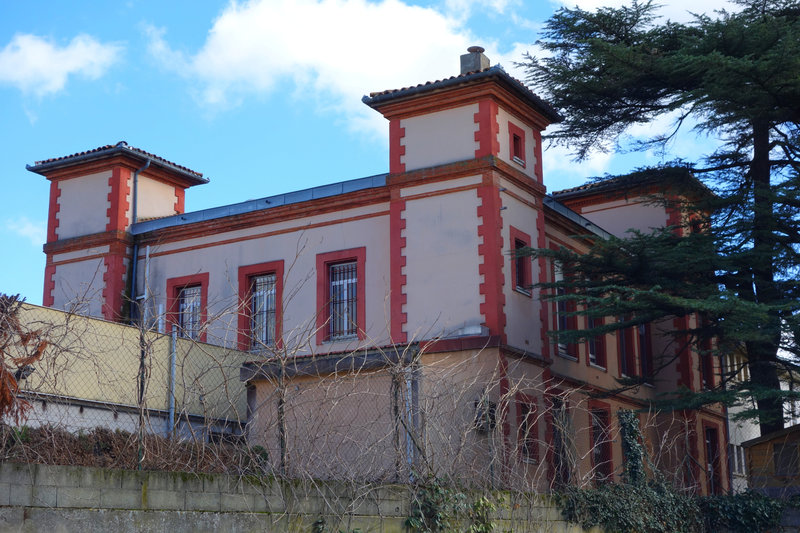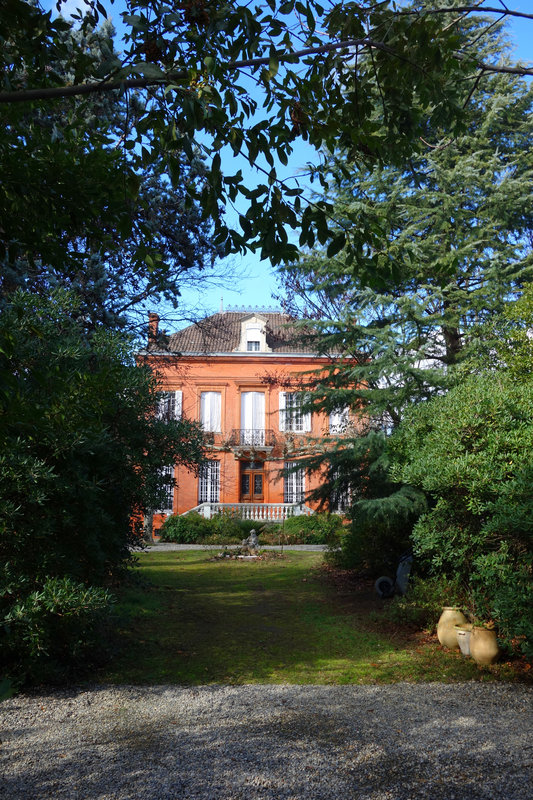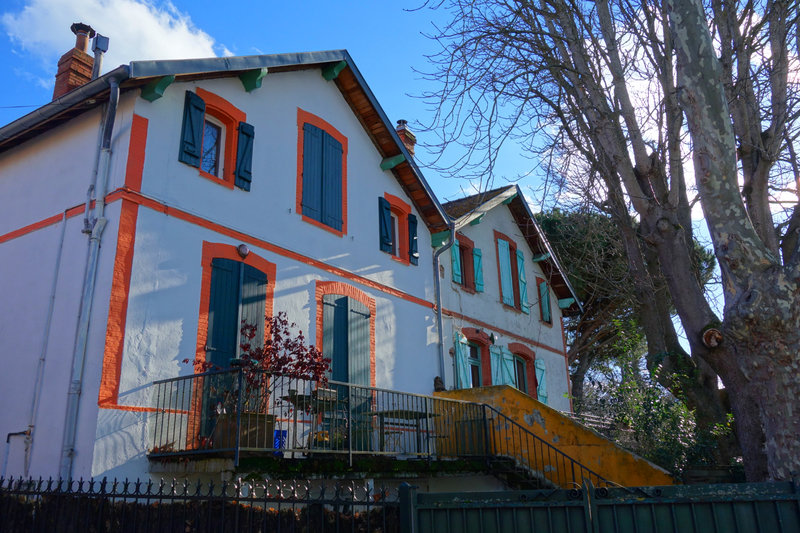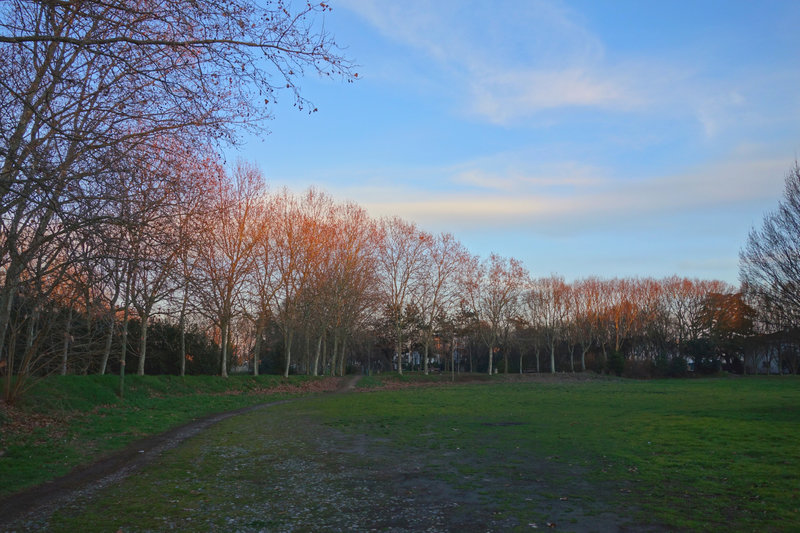Depuis 2009, Toulouse est découpée en 6 secteurs subdivisés eux-mêmes en 20 quartiers « de démocratie locale » regroupant eux-mêmes la presque centaine de quartiers historiques ou plus récents.
Ces secteurs peuvent être délimités par la Garonne, le Canal des deux mers ou les grandes artères.
Je connais bien Toulouse, j’y suis né même si j’ai passé mon enfance et mon adolescence à L’Union, aux portes de la grande ville, j’y ai habité, je connais bien ses rues et depuis de nombreuses années, j’ai vu les transformations de certains quartiers, l’apparition de nouveaux …
J’ai pas mal roulé dans la ville, suivant des thématiques variées (Toulouse insolite, touristique, les grands boulevards et les grandes artères, les cyclables et voies vertes, les parcs et jardins, les rocades et autoroutes, etc.), il me manquait d’en explorer plus minutieusement encore chaque recoin, sans prétendre à passer vraiment partout.
Première balade dans la ville : le secteur Nord qui englobe les secteurs Minimes – Barrière de Paris – Ponts-Jumeaux (quartiers Fondeyre, Ponts-Jumeaux, Bourbaki, Marché aux cochons, Mazades, Negreneys, Chaussas, Fenouillet, La Salade), Sept-Deniers – Ginestous – Lalande (Troenes, Embouchure, Ginestous, Lalande Nord et Sud), Trois-Cocus – Borderouge – Croix-Daurade – Paleficat – Grand Selve (Les Izards, la Vache, Borderouge Nord et Sud-Est, Lapujade, Nicol, Grand Selve, Gramont Ouest).
Un peu d’histoire sur ces quartiers …
Les Trois-Cocus était autrefois (je l’ai connu) une zone de maraîchage, et ce depuis le XVIIème siècle, on y trouve encore ces maisons dites toulousaines typiques.
L’origine vient du patois « cocut » qui signifie « coucou », désolé, il n’y a pas d’histoire d’adultère …
Les trois coucous étaient sculptés sur une bâtisse aujourd’hui disparue et auraient donné le nom de ce secteur de Toulouse. Ce sont les soldats napoléoniens qui, ne maîtrisant pas l’occitan, auraient mal compris ce que leur disaient les habitants en nommant « Tres Cocuts » leur quartier, cela a donc été traduit et diffusé comme « Trois Cocus ».
Dans les années 20 ce quartier a abrité des cités-jardins. Ces cités étaient destinées aux habitants à faible revenu, elles sont l’ancêtre des H.L.M. Elles devaient intégrer des espaces verts, des infrastructures publiques. Jean Montauriol, architecte en chef de la ville de Toulouse entre 1929 et 1949, a créé ces cités et beaucoup de monuments caractéristiques de cette époque, comme la Bibliothèque d’étude et du patrimoine Rue du Périgord ou le groupe scolaire Ernest Renan au sein du quartier des Trois-Cocus.
Plus récemment, une certaine délinquance et le trafic de stupéfiants s’y est développé, certains extrémismes aussi … Mais les médias s’emparent plus de ce genre d’information sans chercher à s’intéresser à ce qu’on peut trouver de positif dans ces quartiers, c’est plus vendeur …
Le quartier est bordé par le joli Parc de la Maourine qui abrite les Serres municipales.
Une vie culturelle et associative s’y est bien réputé.
Les Izards (avec un z, et aux Izards se trouve une maison communale « des Chamois »)
La Maourine
Pour le quartier de La Vache, l’origine est incertaine …
Le Ginestous, lui, accueille la plus importante aire d’accueil des gens du voyage de la région.
Le Canal latéral
L’Embouchure
Les Ponts-Jumeaux désignent d’abord les trois ponts du Port de l’Embouchure, chacun enjambant un canal : Canal de Brienne, Canal du Midi, Canal latéral à la Garonne. Un bas-relief de François Lucas illustre leur histoire.
Les Ponts-Jumeaux ont aussi été un point stratégique lors de la bataille de Toulouse opposant les forces napoléoniennes aux forces de la coalition anglo-hispano-portugaise commandées par le Général Wellington en avril 1814.
Église des Minimes
La Place du Marché aux Cochons porte bien son nom : on y vendait autrefois des cochons que l’on pesait à la bascule toute proche. J’ai travaillé dans deux écoles de ce quartier : l’École Alfred de Musset au cœur de la Cité Bourbaki, ou l’année précédente l’École Alain Fournier, renommée depuis École Claude Nougaro, il y a 25 ans, j’y ai de très bons souvenirs …
Les Minimes, chers à Claude Nougaro, tiennent leur nom à l’installation au 15ème siècle de religieux de l’ordre des Minimes. Le nom de la Rue du Caillou Gris qui part de la Place du Marché aux Cochons et qui se situait à la limite des terres des Minimes vient de l’habitude qu’avaient les moines de jeter là les pierres qui les gênaient dans leurs terres.
Pour La Salade, le nom ne vient pas des nombreux maraîchers qui habitaient là. La « salada » désigne en occitan les fourches patibulaires, gibets de torture.
L’origine du nom du quartier des Sept Deniers remonte au Moyen-Âge. À cette époque, le secteur était une vaste lande, sur laquelle les capitouls accordaient un droit de pâturage aux habitants. Ces derniers devaient toutefois payer un loyer de sept deniers d’or par an pour y faire pâturer leurs bêtes.
Dans le parc des Septs Deniers, on peut observer un superbe fontaine Wallace, avec ses quatre cariatides, oeuvre de Charles Lebourg.
Parc des Sept-Deniers
J’ai été lycéen au Lycée Raymond-Naves et nous avons habité avec Sylvie quelques années Rue Bourdon, à la limite du quartier Lapujade, au premier étage de la maison de ma tante Tatie Nénette, maison qu’elle tenait de ses parents, joliment remise en valeur aujourd’hui par sa fille. Une tatie au cœur d’or, comme d’autres de mes taties biologiques ou de cœur, j’ai tendance à appeler Tonton ou Tatie les personnes chères (Jojo, Solange, si vous lisez ces lignes …).
Je suis passé à Saint-Éloi, pas de chanson parlant du bon Roi Dagobert, mais un des sites industriels historiques de l’histoire de l’aéronautique toulousaine et française. Elle a vu le jour dans les années 20 sous la houlette d’Émile Dewoitine, a poursuivi son essor avec plus tard Sud-Aviation, Aérospatiale ou Airbus. Une partie de ma famille (grand-père, oncles, tante, père) y ont travaillé, sur les différents sites.
Ne pas oublier le Marché d’Intérêt National de Toulouse ou le Stade Toulousain …
Balade urbaine donc, mais pas mal de verdure malgré tout, et de l’eau : la Garonne, le Canal latéral à la Garonne, le Lac de Sesquières, l’Embouchure … Et un sacré contraste entre les sites industriels du Sang de Serp, de Fondeyre, les vieilles bâtisses de certains quartiers plus anciens (toulousaines ou maisons plus cossues du côté de la Sainte-Famille), la nouvelle urbanisation du côté de La Vache …
Et encore un joli gribouillis sur la carte … Un peu plus de 130 km parcourus.
Sesquières
Toulouse Nord – Also in french
Since 2009, Toulouse has been divided into 6 sectors, which are in turn subdivided into 20 « local democracy » districts, which in turn group together the almost one hundred historic or more recent districts.
These sectors can be delimited by the Garonne, the Canal des deux mers or the main arteries.
I know Toulouse well, I was born there even if I spent my childhood and adolescence in L’Union, at the gates of the big city, I lived there, I know its streets well and for many years, I have seen the transformations of certain districts, the appearance of new ones…
I’ve driven around the city quite a bit, following various themes (unusual and touristy Toulouse, the main boulevards and arteries, the cycle paths and greenways, the parks and gardens, the bypasses and motorways, etc.), and I wanted to explore every corner of the city in greater detail, without claiming to be everywhere.
First ride in the city: the North sector, which includes the Minimes – Barrière de Paris – Ponts-Jumeaux (Fondeyre, Ponts-Jumeaux, Bourbaki, Marché aux cochons, Mazades, Negreneys, Chaussas, Fenouillet, La Salade districts), Sept-Deniers – Ginestous – Lalande (Troenes, Embouchure, Ginestous, Lalande North and South), Trois-Cocus – Borderouge – Croix-Daurade – Paleficat – Grand Selve (Les Izards, la Vache, Borderouge North and South-East, Lapujade, Nicol, Grand Selve, Gramont West).
A bit of history on these districts…
Les Trois-Cocus was once (I knew it) a market gardening area, and this since the 17th century, you can still find these typical Toulousan houses.
The origin comes from the patois « cocut » which means « cuckoo », sorry, there is no story of adultery…
The three cuckoos were carved on a building which has now disappeared and would have given the name to this area of Toulouse. It was the Napoleonic soldiers who, not having mastered Occitan, misunderstood what the inhabitants were saying when they named their district « Tres Cocuts », which was then translated and spread as « Trois Cocus ».
In the 1920s, this neighbourhood was home to garden cities. These housing estates were intended for low-income residents, and were the forerunner of the H.L.M. They had to include green spaces and public infrastructures. Jean Montauriol, chief architect of the city of Toulouse between 1929 and 1949, created these housing estates and many of the characteristic monuments of this period, such as the Bibliothèque d’étude et du patrimoine on Rue du Périgord or the Ernest Renan school complex in the Trois-Cocus district.
More recently, a certain amount of delinquency and drug trafficking has developed there, as well as some extremism… But the media are more interested in this kind of information without trying to find out what positive things can be found in these neighbourhoods, it’s more commercial…
The district is bordered by the pretty Parc de la Maourine which houses the municipal greenhouses.
A cultural and associative life is well established there.
The origin of the La Vache district is uncertain…
The Ginestous is home to the region’s largest reception area for travellers.
The Ponts-Jumeaux (twin bridges) first referred to the three bridges of the Port de l’Embouchure, each spanning a canal: the Canal de Brienne, the Canal du Midi and the Canal latéral à la Garonne. A bas-relief by François Lucas illustrates their history.
The Ponts-Jumeaux were also a strategic point during the battle of Toulouse between Napoleon’s forces and the Anglo-Hispano-Portuguese coalition forces led by General Wellington in April 1814.
The Place du Marché aux Cochons is aptly named: pigs used to be sold here and weighed at the nearby weighbridge. I have worked in two schools in this district: the Alfred de Musset School in the heart of the Bourbaki district, and the previous year the Alain Fournier School, since renamed the Claude Nougaro School, 25 years ago, and I have very fond memories of it…
Les Minimes, dear to Claude Nougaro, takes its name from the 15th century settlement of the Minimes order. The name of the Rue du Caillou Gris, which starts at the Place du Marché aux Cochons and which was situated on the edge of the Minimes’ land, comes from the habit of the monks of throwing away the stones that were in the way of their land.
La Garonne
Canal latéral
For La Salade, the name does not come from the many market gardeners who lived there. In Occitan, the « salada » refers to the « fourches patibulaires », torture gibbets.
The origin of the name of the Sept Deniers district goes back to the Middle Ages. At that time, the area was a vast moor, on which the capitouls granted the inhabitants grazing rights. However, the inhabitants had to pay a rent of seven gold denarii per year to graze their animals there.
In the Septs Deniers park, you can see a superb Wallace fountain, with its four caryatids, the work of Charles Lebourg.
I was a pupil at the Lycée Raymond-Naves and Sylvie and I lived for several years in Rue Bourdon, on the edge of the Lapujade district, on the first floor of my aunt Nénette’s house, a house that she inherited from her parents, and which her daughter has now beautifully restored. An auntie with a heart of gold, like other of my biological or heart aunties, I tend to call dear people Uncle or Auntie (Jojo, Solange, if you read these lines…).
I went to Saint-Eloi, no song about the good King Dagobert, but one of the historic industrial sites in the history of Toulouse and French aeronautics. It began in the 1920s under the leadership of Emile Dewoitine, and continued to develop later with Sud-Aviation, Aérospatiale and Airbus. Part of my family (grandfather, uncles, aunt, father) worked there, on the different sites.
Don’t forget the Marché d’Intérêt National de Toulouse or the Stade Toulousain …
An urban stroll, but a lot of greenery despite everything, and water: the Garonne, the Canal latéral à la Garonne, the Lac de Sesquières, the Embouchure … And a great contrast between the industrial sites of Sang de Serp, Fondeyre, the old buildings of some of the older neighbourhoods (toulousaines or more luxurious houses on the side of the Sainte-Famille), the new urbanization on the side of La Vache …
And another nice scribble on the map … Just over 130 km travelled.
Translated with www.DeepL.com/Translator (free version)



